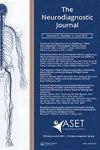《自主测试》,Peter Novak,医学博士,牛津大学出版社,2019年,528页。ISBN: 978 - 0190889227。零售:150.00美元。目前在亚马逊有售,平装本:90.24美元,Kindle: 106.00美元。
Q3 Health Professions
引用次数: 0
摘要
本文章由计算机程序翻译,如有差异,请以英文原文为准。
Review of "Autonomic Testing," by Peter Novak Autonomic Testing by Peter Novak, M.D., Ph.D., Oxford University Press, 2019, 528 pages. ISBN: 978-0190889227. Retail: $150.00. Currently available through Amazon, paperback: $90.24 and Kindle: $106.00.
The first part of Autonomic Testing provides an understanding of the pertinent anatomy and physiology and explanations on how to conduct functional autonomic tests. This includes minimum requirements as well as additional monitors that can be utilized to provide additional information. Each test is further explained by the physiology, technique, and interpretation. This is useful for technologists because it brings together all aspects of performing an autonomic test. This section ends with a normal case study. The remainder of the book consists of ninety-nine cases presented over ten sections. The cases are grouped together based upon patterns and syndromes commonly encountered such as syncope, postural tachycardia syndromes, and small fiber neuropathy. The author also includes sections on testing with other neurological conditions such as neurodegenerative disorders and multiple sclerosis. The format of the cases presented are extremely helpful and are a feature of the book that is beneficial to both novice and experienced technologists. Each case begins with the chief complaint, case presentation, past medical history, medications, and an assessment plan. This is followed by the autonomic test evaluation which includes information about heart rate, blood pressure (for the Valsalva and tilt tests) sudomotor evaluation, respiratory system effects including end tidal CO2, cerebral blood flow velocity, skin biopsy of both sensory-epidermal and sweat glands, and patient symptoms reported during the test. Included are tables that display the results of the aforementioned diagnostics. The interpretation is provided followed by comments, treatment and follow-up, and caveats. The case study concludes with figures displaying the results of the tilt test with comments that include the patient’s clinical response at specific times to further aid in the interpretation and understanding of results. Autonomic Testing is a comprehensive guide for anyone who is interested in the evolving field of autonomic neurology. The earlier chapters provide enough information to create a foundation to better understand the remainder of the book. Dr. Novak provides a resource with meticulously detailed diagnostic information and presents it in a way that connects both knowledge and clinical application. This book is a valuable tool for every autonomic lab and personnel interested in autonomic tests.
求助全文
通过发布文献求助,成功后即可免费获取论文全文。
去求助
来源期刊

The Neurodiagnostic Journal
Health Professions-Medical Laboratory Technology
CiteScore
1.00
自引率
0.00%
发文量
26
期刊介绍:
The Neurodiagnostic Journal is the official journal of ASET - The Neurodiagnostic Society. It serves as an educational resource for Neurodiagnostic professionals, a vehicle for introducing new techniques and innovative technologies in the field, patient safety and advocacy, and an avenue for sharing best practices within the Neurodiagnostic Technology profession. The journal features original articles about electroencephalography (EEG), evoked potentials (EP), intraoperative neuromonitoring (IONM), nerve conduction (NC), polysomnography (PSG), autonomic testing, and long-term monitoring (LTM) in the intensive care (ICU) and epilepsy monitoring units (EMU). Subject matter also includes education, training, lab management, legislative and licensure needs, guidelines for standards of care, and the impact of our profession in healthcare and society. The journal seeks to foster ideas, commentary, and news from technologists, physicians, clinicians, managers/leaders, and professional organizations, and to introduce trends and the latest developments in the field of neurodiagnostics. Media reviews, case studies, ASET Annual Conference proceedings, review articles, and quizzes for ASET-CEUs are also published in The Neurodiagnostic Journal.
 求助内容:
求助内容: 应助结果提醒方式:
应助结果提醒方式:


